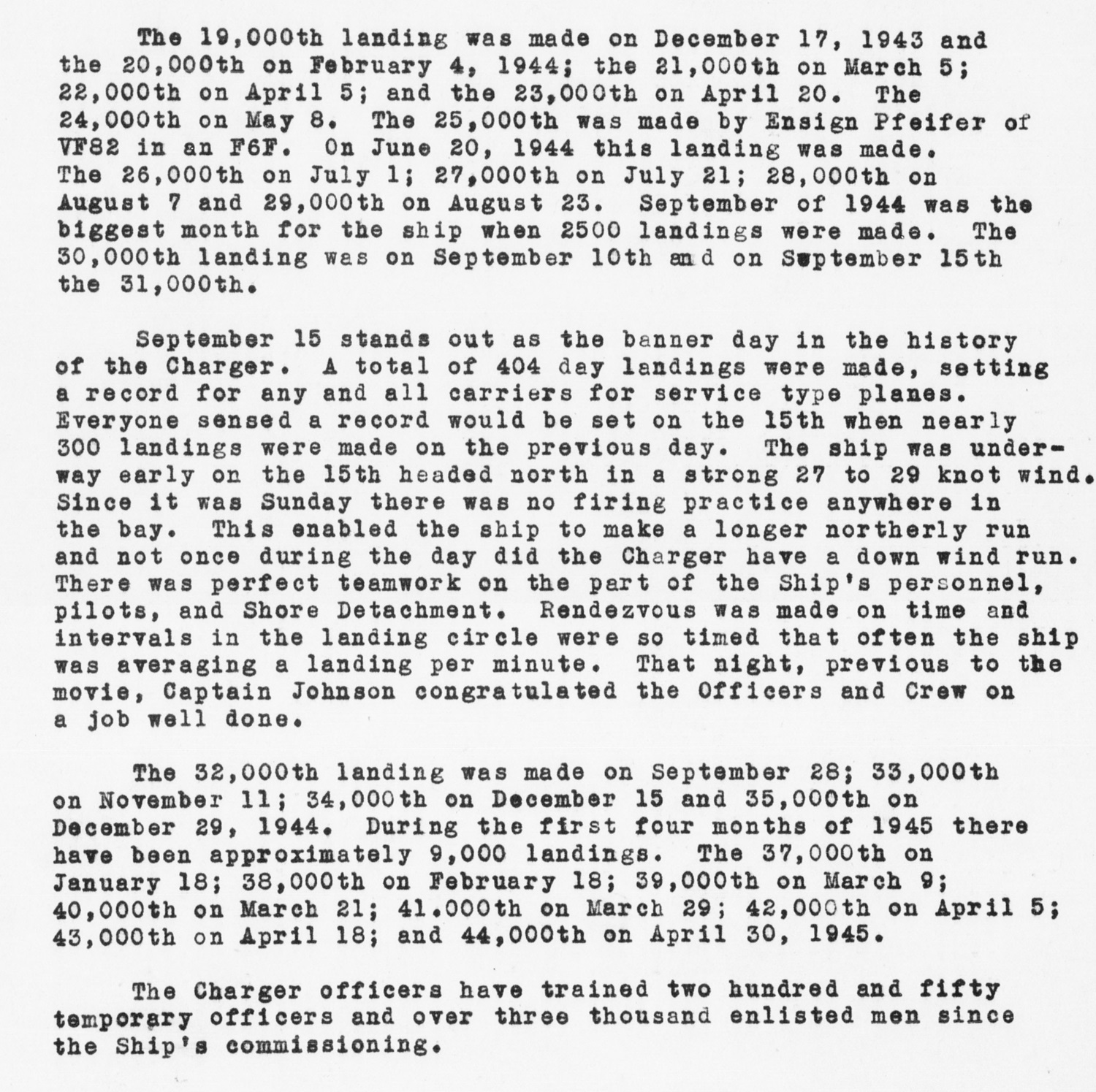Steaming in Circles
80 years ago this week, how about this great original color image of the Moore-McCormack company’s American Republics Liner Rio de la Plata, seen in her WWII configuration as the escort carrier USS Charger (CVE-30), seen with a Grumman TBF (or TBM) “Avenger” torpedo plane landing on board, during flight training operations in the Chesapeake Bay Area, 22 April 1944. Note flight deck crewmen in the galleries and the ship’s angular smokestack.
Charger had an interesting career, and by the time of the above image, she had already recorded 23,000 landings– a figure she would almost double before the end of the war.
Built by the Sun Shipbuilding and Drydock Co., Chester, Pennsylvania for Moore-McCormack to a 17,500-ton government C3-P&C cargo/passenger liner design, she was launched on 1 March 1941 but acquired, incomplete along with her three sisters, by the Navy soon after.
All four would be completed as 15,000-ton escort carriers including a 410-foot flight deck, a 190×47-foot hangar for aircraft stowage, the capability to operate as many as 15 aircraft, a single 42×34 elevator, and 9 arrestor wires. Armarment was four 4″/50 DP guns and 15 20mm Orelikons.
Commissioned on 2 October 1941 as HMS Charger (D27) for the Royal Navy at a time when the U.S., still two months out from the attack on Pearl Harbor, was still at an uneasy peace, for various reasons she reverted to U.S. custody two days later and became USS Charger (AVG-30) under the command of Capt. Thomas Lamison Sprague (USNA 1918).
While her three sisters went on to serve the RN well as HMS Avenger (D14), HMS Biter (D97), and HMS Dasher (D37), Charger remained in American service throughout the war, steaming circles around Chesapeake Bay training pilots and ships’ crews in carrier operations.

A U.S. Navy General Motors FM-2 Wildcat fighter prepares to take off from the escort carrier USS Charger (CVE-30) during training operations in the Chesapeake Bay area, 8 May 1944. Another FM-2 is passing overhead with its tail hook down, apparently having received a “wave-off” due to the carrier’s fouled flight deck. Note the light Atlantic area paint schemes worn by these planes. U.S. Navy photo 80-G-K-1601
She logged over 44,000 landings between April 1942 and April 1945, typically averaging 250 per day when underway on evolutions.
From her War History:
As noted by DANFS:
Men trained on her decks played an important role in the successful contest for the Atlantic with hostile submarines carried out by the escort carrier groups.
Charger, perhaps the only U.S. Navy carrier to serve for the entire duration of WWII to not receive any battle stars, was decommissioned at New York on 15 March 1946 and sold on 30 January 1947.
Postwar, she was converted to serve in her original role as a combiliner, operated by the Italian-managed Sitmar (Vlasov) Line as the SS Fairsea until 1969 when she was finally scrapped.





